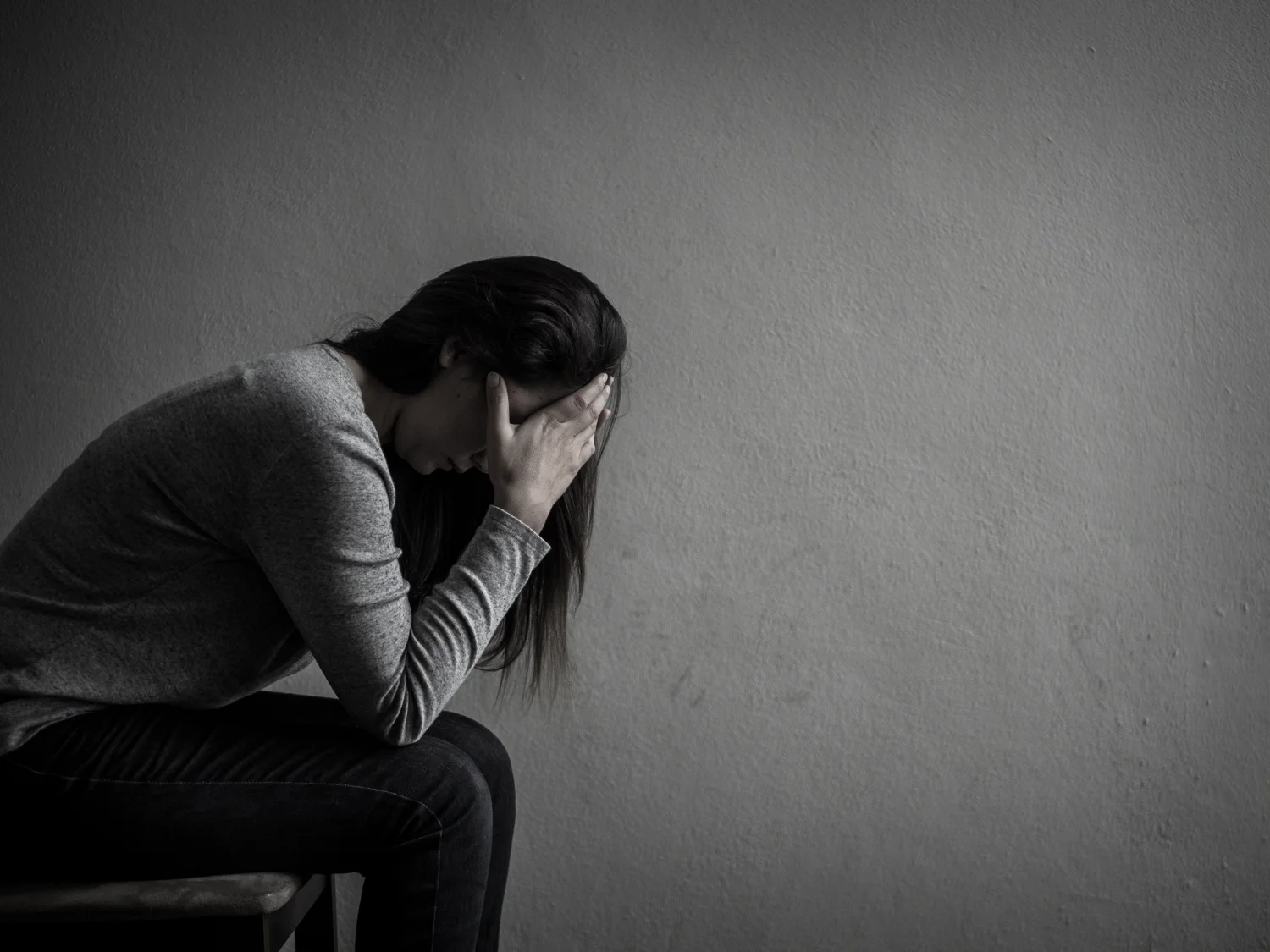Understanding Inhalant Withdrawal Symptoms
Inhalant abuse, which is frequently underestimated and ignored, can result in severe withdrawal symptoms when individuals abruptly discontinue or reduce their intake after chronic use. Inhalants are a diverse group of chemical compounds that generate mind-altering effects when inhaled.

Common sources include aerosols, solvents, glues, and gasses present in everyday products. Despite their ease of use, inhalants carry serious health concerns and can lead to addiction. Understanding inhalant withdrawal symptoms is critical for diagnosing and effectively treating this type of substance dependence.
Exploring Inhalant Withdrawal Symptoms
It usually takes a few hours to a few days after stopping inhalants for withdrawal symptoms to set in. Factors such as individual physiology and the frequency and length of inhalant usage determine the intensity and duration of symptoms. Symptoms of inhalant withdrawal often include:
- Physical Symptoms: People going through inhalant withdrawal could feel some bodily pain, like headaches, nausea, vomiting, weak muscles, tremors, and heavy perspiration. If these symptoms are not addressed, they can have a major negative effect on general health and even lead to relapse.
- Mental Symptoms: Difficulty focusing, anxiety, sadness, impatience, mood swings, and depression are common mental health issues that can accompany inhalant withdrawal. These symptoms can make it hard to go about everyday life and put a strain on relationships.
- Strong Inhalant Cravings: Withdrawal is characterized by intense inhalation cravings. The great urge to ease discomfort or replicate the euphoric effects of inhalant usage can provide a substantial obstacle to people striving to refrain from substance abuse.
- Trouble Sleeping: Withdrawal from inhalants is associated with insomnia and other sleep disturbances. To make matters worse, people may have trouble falling asleep, wake up often, or have disturbing nightmares.
- Cognitive Symptoms: Confusion, memory issues, trouble making judgments, and trouble processing information are some of the cognitive impairments that some people may suffer during withdrawal.
Effects of Inhalant Withdrawal
Indeed, it is imperative that we further explore the ramifications of inhalant withdrawal symptoms.
Effects on Mental Health
- Anxiety: People who already suffer from anxiety problems may find their symptoms worsened during inhalant withdrawal, and those who have never experienced anxiety before may even develop symptoms. Symptoms of this elevated anxiety state include a lack of calm, apprehension, and restlessness.
- Depression: Sadness, despair, and hopelessness are common emotions for those going through inhalant withdrawal. Sudden and severe depression can cause a person to withdraw from friends and family, lose interest in things they used to like, and even contemplate self-harm or death.
- Irritability: Irritability, agitation, and mood swings are common symptoms of inhalant withdrawal. When people are easily irritated or enraged, it can cause problems in their personal and professional relationships.
- Cognitive Dysfunction: When you stop using inhalants, your memory, focus, and capacity to make sound decisions may all be negatively impacted. Feelings of inadequacy and dissatisfaction may accompany this cognitive impairment, which may impede academic or occupational performance.
Physical manifestations
- Respiratory Distress: Problems with the respiratory system, including bronchitis, pneumonia, and pulmonary edema, can result from long-term inhalant usage. Some people find that their respiratory symptoms, such as coughing, wheezing, and difficulty breathing, worsen during withdrawal.
- Cardiovascular Issues: Withdrawal from inhalants can put pressure on the heart and blood vessels, which can lead to hypertension, rapid heart rate, and irregular heartbeats. Chest discomfort, palpitations, and vertigo are symptoms that may emerge from these cardiovascular problems.
- Gastrointestinal Disturbances: Withdrawal from inhalants can affect gastrointestinal function, causing nausea, vomiting, diarrhea, and abdominal discomfort. Untreated gastrointestinal problems can lead to electrolyte imbalances and dehydration.
- Musculoskeletal Aches and Pains: When you stop using inhalants, you can feel sore all over, especially in your muscles and joints. When you have problems moving around because of aches and pains in your muscles and joints, it can make you feel even worse.
Social and Interpersonal Consequences
- Social Isolation: People who are going through inhalant withdrawal may separate themselves from those they normally interact with. This kind of social exclusion can intensify the emotions of loneliness, estrangement, and disconnection from other people.
- Overspending on Inhalants: When people become addicted to inhalants, they tend to spend all of their money on them, even when they have other important requirements. People going through withdrawal may have trouble making ends meet owing to issues including being unemployed, unable to work, or dealing with the legal ramifications of substance misuse.
- Legal Considerations: Possession, distribution, and driving under the influence are among the crimes that can arise from inhalant abuse. When you stop using inhalants, you may find yourself more involved with the law and the criminal justice system, which could make your legal problems worse.
- Family Discord: Addiction to inhalants can put a strain on family connections and add to the dysfunction and strife within the family. When someone is experiencing withdrawal symptoms, it can make family issues worse and make loved ones feel even more betrayed, angry, and resentful.
Coping Strategies for Inhalant Withdrawal Symptoms
Managing inhalant withdrawal symptoms calls for a diverse approach:
- Seek Professional Help: To properly manage inhalant withdrawal, see a healthcare professional or addiction specialist. Medical monitoring can assist in alleviating severe symptoms and lowering the risk of consequences.
- Stay Hydrated and Nourished: Drinking enough water and eating nutritious meals will aid with physical discomfort and overall well-being during withdrawal.
- Practice Relaxation Techniques: Deep breathing, meditation, and yoga can all help lower anxiety and improve relaxation during withdrawal.
- Stay Active: Engaging in regular physical activity might aid with withdrawal symptoms and boost mood. Simple exercises like walking, jogging, or yoga can help.
- Build a Support System: Surrounding oneself with sympathetic friends, family members, or classmates who understand the difficulties of withdrawal can provide encouragement and motivation during recovery.
- Distract Yourself: Engage in things that will keep you from experiencing withdrawal symptoms, such as hobbies, reading, listening to music, or spending time outside.
- Avoid Triggers: Recognize and avoid events, locations, or individuals who may cause cravings or worsen withdrawal symptoms.
Treatment for Inhalant Withdrawal
Effective treatment approaches for inhalant withdrawal address both the physical and psychological aspects of addiction:
Medical detoxification: In cases of severe inhalant addiction, medical detoxification may be required to manage withdrawal symptoms properly. Medical personnel can provide 24-hour monitoring and prescribe drugs to alleviate discomfort and lower the risk of problems. Healthcare professionals may treat any underlying medical conditions that have worsened as a result of inhalant misuse during detoxification.
Medication-Assisted Treatment (MAT): While no specific drugs have been licensed to treat inhalant addiction, several medications may be used to address co-occurring symptoms, including anxiety, sadness, or sleeplessness during withdrawal. To ease psychological suffering, antidepressants or anti-anxiety drugs may be provided, and sleep aids may help normalize sleep patterns interrupted by withdrawal.
Behavioral Therapy: Behavioral therapies are an essential component of inhalant addiction treatment. Cognitive-behavioral therapy (CBT) assists clients in identifying and changing dysfunctional thought patterns and behaviors related to substance misuse. Motivational interviewing strategies assist people to confront their ambivalence about change and boost their resolve to recover. Group therapy sessions offer a friendly setting in which people can discuss their experiences, receive feedback, and learn coping techniques from peers who are facing similar issues.
Family therapy: Therapists assist family members in improving communication, establishing boundaries, and developing coping techniques to support their loved one's rehabilitation. Family therapy also serves as a platform for addressing unsolved problems, rebuilding trust, and creating a supportive family atmosphere conducive to rehabilitation.
Support Groups: Joining support groups like Narcotics Anonymous (NA) or SMART Recovery gives people a sense of belonging, acceptance, and understanding. Support groups offer peer support, encouragement, and accountability during the recovery process. Group participants share ways of dealing with cravings, managing triggers, and overcoming typical problems during recovery.
Dual Diagnosis Treatment: Many people who struggle with inhalant addiction also suffer from anxiety, depression, or post-traumatic stress disorder (PTSD). Dual-diagnosis treatment programs address both substance misuse and mental health concerns concurrently, providing integrated therapy that is tailored to the individual's specific requirements. These programs may include psychiatric examinations, medication management, and specific therapeutic interventions aimed at addressing the intricate relationship between substance misuse and mental illness.
Aftercare Planning and Relapse Prevention:Successful recovery from inhalant addiction involves continuing support and dedication to sobriety. Aftercare planning is devising a complete relapse prevention approach that includes continuous therapy, participation in support groups, healthy lifestyle activities, and access to community resources. Individuals may also benefit from building a network of supporting contacts and identifying potential triggers or high-risk events that could endanger their healing.
Embracing medical detoxification, attending therapy sessions, and finding assistance from groups can all help you regain control of your life and overcome addiction. Individuals can embark on a path to long-term sobriety and well-being with dedication, support, and expert direction.




